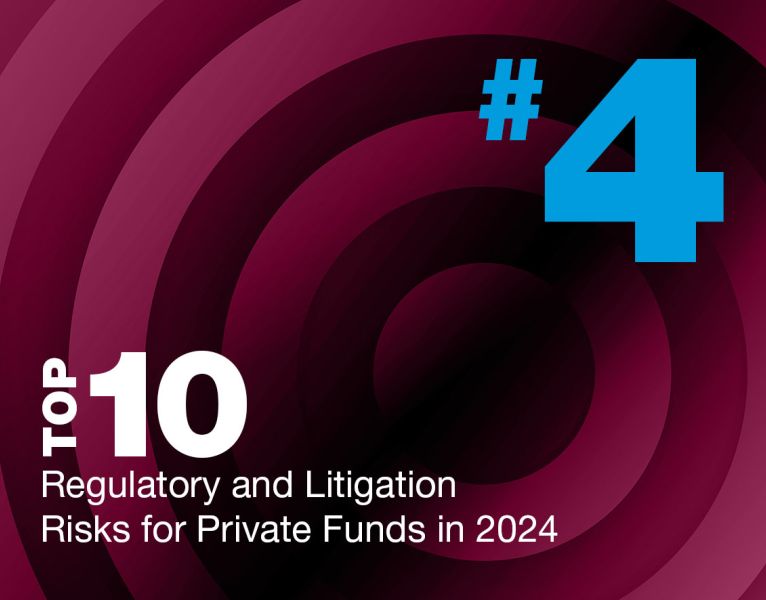Adviser-led secondary transactions have seen explosive growth over the last five years. That growth has brought increased regulatory concerns over the conflicts of interests inherent in these transactions and a perceived lack of transparency into this market. New SEC rules adopted in 2023 will arm regulators with additional tools to identify, exam and investigate market practices. It is therefore critical for managers running an adviser-led secondary transaction to not only comply with the new rules as they become effective but to structure any such transaction with the SEC’s concerns in mind.
The SEC’s New Tools to Address Adviser-led Secondaries
In 2023, the SEC adopted new reporting obligations and other requirements for adviser-led secondary transactions. First, the amended Form PF reporting obligations require SEC-registered investment advisers (“RIAs”), within 60 days after the end of each quarter, to report the execution of an adviser-led secondary transaction in the prior quarter involving a “private equity fund” (as defined in the Form). The first filings were due by February 29, 2024. The adopting release to the Form PF amendments makes clear that the purpose of quarterly reporting is to “increase the efficiency and effectiveness” of SEC examinations and investigations, thereby informing its policy making and increasing investor protection. Thus, the new Form PF reporting will likely lead to greater scrutiny of adviser-led secondaries in the exam context and could become the basis of future sweeps or targeted examinations.
Second, the final Private Fund Adviser rules will require RIAs conducting an adviser-led secondary transaction to obtain a fairness opinion or a valuation opinion and prepare and distribute a written summary of any material business relationships between the adviser or its related persons and the independent opinion provider. Although the Adviser-led Secondaries rule is part of the ongoing litigation and does not kick in until September 2024 (for larger private fund advisers) or March 2025 (for smaller private fund advisers), the SEC’s statements in the adopting release (like the Form PF Release), provide critical insights into the SEC’s concerns regarding these transactions.
Specific Conflicts and Areas of Concern Raised by the SEC
The adopting releases for both the Form PF and Adviser-led Secondaries rules highlight the SEC’s particular areas of concern, including:
- Heightened Risks: The Private Fund Adviser rules adopting release notes that adviser-led secondaries may be “particularly risky” based on the staff’s understanding that such transactions occur during times of stress where the adviser may be under pressure to restructure a portfolio investment or extend the fund’s contractually agreed upon term.
- Valuation of Assets: In support for requiring a fairness or valuation opinion, the release identifies the adviser’s potential incentive “to over- or undervalue the underlying asset depending on how they will receive the most compensation,” whether from the selling fund or from the continuation fund.
- Compensation: The release observes the potential conflicts arising from the ongoing compensation that the adviser would earn from the continuation fund: “Advisers stand to profit . . . by earning additional compensation in the form of management fees or carried interest which is ultimately paid by fund investors.”
- New Vehicle Terms: The release highlights that the potential conflicts “may influence or alter the terms the adviser sets forth in the new vehicle’s governing agreement to the detriment of investors.”
- Stapled Commitment: The release reiterates the staff’s prior concerns over stapled secondary transactions – if the secondary buyer is required to make a stapled commitment to another vehicle, “the price offered to the fund’s investors could be adversely affected if the staple requirement reduces the amount prospective buyers are willing to pay.”
- LPAC Consent: The adopting releases for both the Form PF amendments and the Private Fund Adviser rules raise the same concern that advisory board or LPAC consent alone may not be sufficient to address conflicts, with the former noting that “advisory boards are comprised of only the largest investors in the fund, and the adviser does not seek consent from the remaining investors,” and the latter even going so far as to assert that LPACs “may not have sufficient independence, authority, or accountability to effectively oversee and consent to conflicts or other harmful practices.”
- Informed Consent: Both releases likewise emphasize the need for informed consent, expressing concern in situations where limited partners are not given enough time “to adequately conduct diligence or negotiate the terms of the continuation fund before its election is due.”
Takeaways
One can debate whether the nature of, and the frequency with which, these conflicts arise in adviser-led secondaries support the SEC’s adoption of new reporting and procedural requirements, given that adviser conflicts of interest were already covered by the antifraud provisions of the Advisers Act in Section 206 as well as Rule 206(4)-8. Nevertheless, these releases provide a roadmap of the SEC’s concerns in these transactions. Even if the recent rulemaking does not withstand the ongoing court challenges, the SEC’s views are clear: Conflicts involved in these transactions must be disclosed, informed consent must be obtained, and the SEC will be watching closely to make sure that that happens.
To mitigate the regulatory risks in these transactions, advisers should therefore be attentive to such things as asset valuations, the structuring of compensation and new vehicle terms and the completeness of the disclosures. Additional attention should be placed on the consent process to ensure that limited partners have complete information and adequate time to provide fully informed consent. Notwithstanding an environment of greater SEC scrutiny and ever-increasing consequences of getting it wrong, the risks can be managed through deliberate processes and disclosures that bear the SEC’s concerns closely in mind.
Read more of our Top Ten Regulatory and Litigation Risks for Private Funds in 2024.


